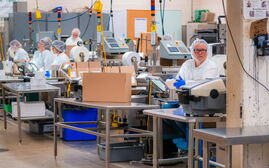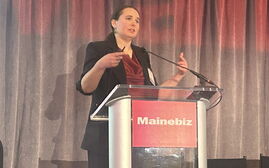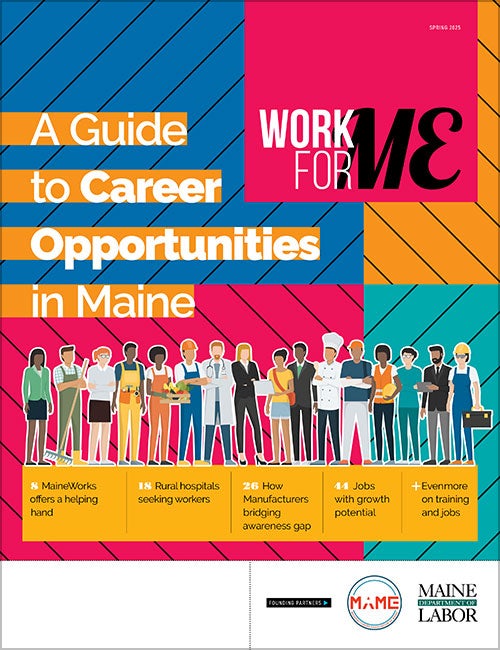
How Maine is becoming national leader in medical innovation
Reading the news, it is easy to get pessimistic about the Maine economy. From our state’s labor shortage to housing costs and current political debates, negative headlines are all too common.

Of course, there are many issues that our state — from policymakers in Augusta to everyday Mainers — must address. There is indeed a labor shortage in Maine, and employees are desperate to find skilled employees to grow business operations, support product lines and invest in research and development.
“Made in Maine” companies like ours rely on homegrown talent and those who move here for good-paying jobs.
But there are plenty of reasons for optimism. Maine employers can be hopeful about the future because, through entrepreneurship and daily innovation, they are giving job-seekers opportunities for career growth. We don’t need to look far to see ingenuity in practice, especially at the small businesses and family-owned companies that make our economy strong.
A $2.3 billion industry
Look no further than life sciences. Making immense contributions to medicine, life sciences is a $2.3 billion industry in Maine, and the sector’s job growth has exceeded 30% in recent years — outpacing job creation in all other industries. This also outpaces the industry’s job growth in New England and across America. At the same time, earning potential in life sciences continues to exceed expectations, making the profession even more appealing to prospective employees.
Why all the success? It might sound like a cliché, but companies in health care and medicine are some of the state’s leading innovators, making scientific breakthroughs, bringing new ideas to market and expanding current product lines in ways that appeal to a wide range of patients. From genetics and forensics to the environment, the applications for these products are multifaceted. And, in the age of artificial intelligence, businesses are harnessing Big Data for research, operational support and clinical care itself.
For the same reason that small businesses and family-owned companies form the backbone of our state economy, they are also pushing the limits of scientific discovery. This often means adjusting to changing circumstances in the global marketplace.
For instance, Puritan Medical Products went from manufacturing toothpicks in the early 1900s to becoming North America’s largest manufacturer of COVID-19 testing swabs at the height of the pandemic to adapting again since then.
This week, we are attending the Association for Diagnostics & Laboratory Medicine’s annual conference in Chicago to showcase our work in Maine to countless leaders in the industry. They need to know that Maine is firmly on the map.
The ability to adapt is not our story alone. Leaning on Maine talent and making products in America, there are countless stories of innovation across our state. After all, the state’s manufacturing sector employs tens of thousands of employees, contributing over $8 billion to the state economy.
It is incumbent on the public sector to support a thriving private sector, and help it keep growing. To the credit of Gov. Janet Mills, the state recently announced the Maine Life Sciences Incubator, a state-of-the-art laboratory that will support emerging companies in the space. From the governor’s office to Maine’s congressional delegation, similar support should be shown to more established companies that have “made in Maine” for decades.
The state’s most inventive businesses also need to be in the running for nonprofit grant funding that can accelerate the work already being done. Seven- and eight-figure grant allocations can fan the flames of business expansion and job creation, not to mention medical innovation for patients in need.
The bottom line is this: Maine’s business community is strong, and that strength is particularly apparent in life sciences.
Whether it’s a policymaker in Augusta or a job-seeker looking to find work in Maine, we should all get behind the field of medical innovation and the individual innovators pushing it forward. At our current growth rate, it spells hope for the state labor market and our entire economy.













0 Comments